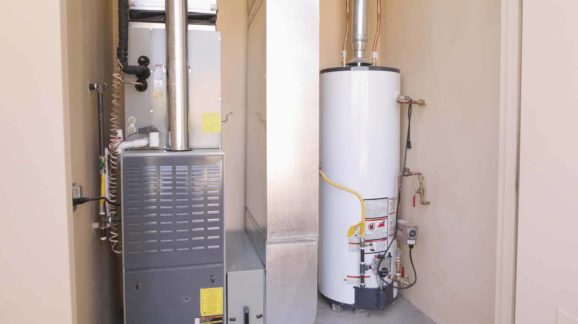Trump DOE Finalizes More Flexible Regulation for Residential Furnaces

Photo Credit: Getty
In one of the Trump Department of Energy’s (DOE) last regulatory actions, the agency on January 15 revised the energy efficiency standards for residential furnaces in a way that will expand consumer choice and reduce costs. But the rule has already come under attack from activists and likely will be targeted by the incoming Biden administration.
Under the 1975 Energy and Policy Conservation Act, DOE has authority to set and periodically revise energy and water efficiency standards for home appliances. By now, everything from air conditioners to dishwashers to water heaters to clothes washers and dryers to lighting to furnaces and more has been subjected to multiple rounds of successively tighter standards.
Though ostensibly for the benefit of consumers, some standards, such as those for home air conditioners, have raised the upfront cost of appliances more than many consumers will earn back in the form of lower utility bills.
Even worse, some standards compromise appliance performance and features, though the statutory text explicitly forbids any DOE rule that “is likely to result in the unavailability in the United States in any covered product type (or class) of performance characteristics (including reliability), features, sizes, capacities, and volumes.”
For decades, CEI has opposed many of these regulations, and in several instances we found an ally in the Trump DOE. Most notably, CEI argued that the standards for dishwashers impermissibly resulted in much longer times to finish a load and in 2018 petitioned the agency to create a separate standard achievable by models that can do the job in less than an hour. On October 30, 2020, DOE granted our request. CEI also supported recent DOE rule changes allowing more powerful showers, faster clothes washer/dryers, and greater choice in light bulbs.
The latest furnace rule is another regulatory revision that benefits consumers. The original rule, proposed but never finalized by the Obama DOE in 2015, would set an efficiency standard so stringent that it would require all new furnace models to be of the condensing type. Condensing furnaces not only cost more to purchase, but also more to install as they frequently necessitate an entirely new venting system that exhausts through the side of a home rather than the roof or chimney.
According to the American Gas Association, one of the industry groups that petitioned for the rule change in 2018, a condensing furnace costs about $350 more to buy and up to $2,200 more to install than an efficient non-condensing furnace. That’s considerably more than most homeowners would ever earn back in the form of energy savings. And for some residences, installing a condensing furnace would be virtually impossible as the venting requirements cannot be met. Yet the Obama rule sought to impose this one-size-fits-all mandate.
DOE’s new rule both withdraws the old Obama-era proposal and requires that any future efficiency standards for residential furnaces must still allow for non-condensing versions to remain on the market. Unfortunately, energy efficiency activist groups have already announced that they will try to repeal this measure and are urging the incoming Biden DOE team to help them.
Any homeowner who wants to buy an ultra-efficient appliance is free to do so with or without a government mandate in place. The only thing federal standards do is force that choice on everyone, even if it costs more than it saves, hurts product performance, eliminates certain features, or any combination of the three. The Trump DOE did the right thing by blocking costly and inflexible furnace standards.